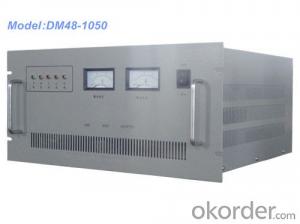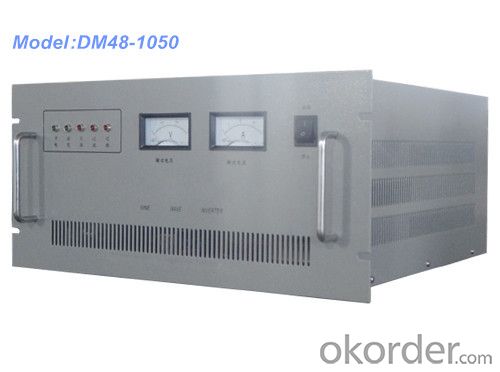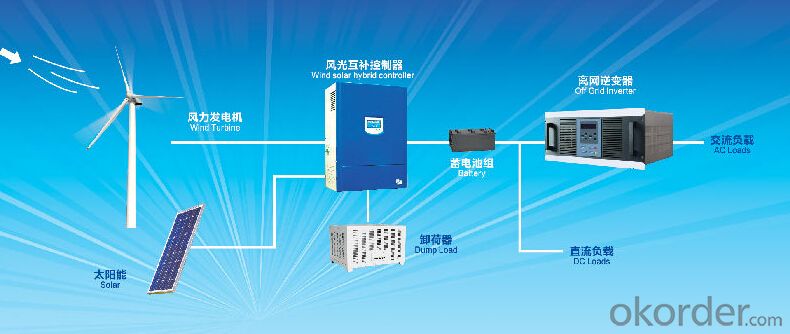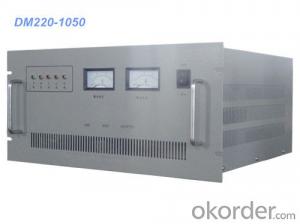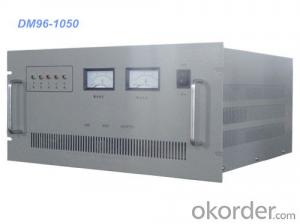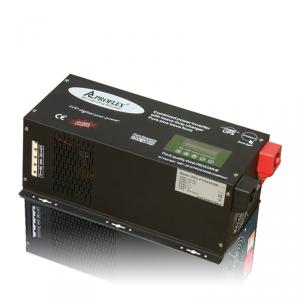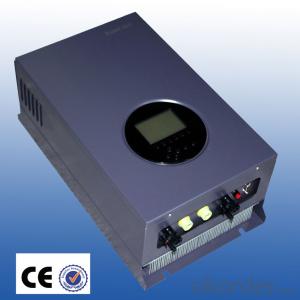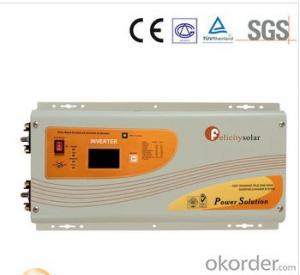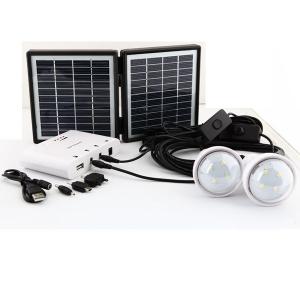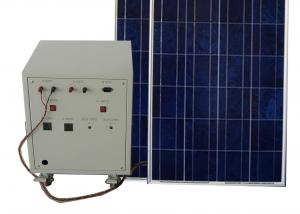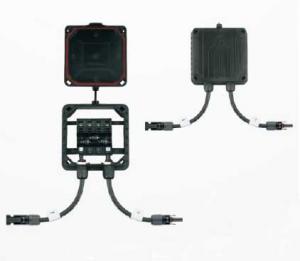Arinna Solar Energy Systems Pure Sine Wave Inverter/DC AC Inverter 5KVA 48V with Isolate Transformer
- Loading Port:
- Qingdao
- Payment Terms:
- TT or LC
- Min Order Qty:
- 1 unit
- Supply Capability:
- 800 unit/month
OKorder Service Pledge
OKorder Financial Service
You Might Also Like
Specifications
1.using IGBT from Mitsubishi company
2.using American ATEMEL company microprocessor
3.Max. Efficiency>94%
Features:
1. using IGBT from Mitsubishi company as the power components
2. using American ATEMEL company microprocessor as figure controller
3. perfect protection and warning functions
4. circuit frame compact,Max. Efficiency≥94%
5. with wide input voltage range
Off Grid Pure Sine Wave Inverter 5KW 48V for wind power and PV power with factory price

Technical Data Sheet
Type | ND48-5KD | ||||
DC input | Input rated voltage | 48 VDC | |||
Input rated current | 119 A | ||||
Input DC voltage range | 40-60 Vdc | ||||
AC input | Allow input voltage range | 110 VAC / 120 VAC / 220 VAC / 240 VAC ± 15% | |||
Input rated current | 45.5A / 41.7A / 22.5 A / 21A | ||||
Bypass transfer time | ≦4 ms | ||||
AC output | Rated capacity | 5KVA | |||
Output rated power | 4KW | ||||
Output rated voltage and frequency | 110 VAC / 120 VAC / 220 VAC / 240 VAC,50Hz / 60Hz | ||||
Output rated current | 45.5A / 41.7A / 22.5 A / 21A | ||||
Output voltage accuracy | 110 VAC / 120 VAC / 220 VAC / 240 VAC± 2% | ||||
Output frequency accuracy | 50Hz / 60Hz ± 0.05% | ||||
Waveform distortion (THD). | ≤3% | ||||
Dynamic response time | 5% | ||||
Power factor (PF) | 0.8 | ||||
Overload capacity | 120%,3minutes,150%,10second | ||||
Crest factor (CF) | 3:1 | ||||
Inverter efficiency | 90% | ||||
Working Environment | Dielectric strength | 1500VAC,1minute | |||
Noise (1m) | ≤50dB | ||||
Ambient temperature | -10℃~+50℃ | ||||
Humidity | 0~90%,No condensation | ||||
Altitude | ≤5000 m | ||||
Industrial Frequency Transformer | Yes | ||||
Production function | Input reverse protection, input under-voltage protection, output overload protection, output short circuit protection, thermal protection | ||||
Dimensions | 482*420*223mm | ||||
Weight | 52kg | ||||
FAQ
Q1:Can we visit your factory?
A1:Sure,welcome at any time,seeing is believing.
Q2:Which payment terms can you accept?
A2:T/T,L/C,Moneygram,Paypal are available for us.
- Q: Can solar energy systems be installed on the ground?
- Yes, solar energy systems can be installed on the ground. In fact, ground-mounted solar systems are a popular choice for both residential and commercial applications. These systems typically consist of solar panels mounted on a structure or framework that is anchored to the ground. Ground-mounted systems offer several advantages over rooftop installations, such as increased flexibility in system design, easier access for maintenance and cleaning, and the ability to optimize the orientation and tilt angle of the panels for maximum energy production. Additionally, ground-mounted systems can be installed in areas with limited roof space or where the roof is not suitable for solar panel installation. Overall, ground-mounted solar energy systems provide a practical and efficient way to harness the power of the sun for electricity generation.
- Q: How much space is needed to install a solar energy system?
- The space required for installing a solar energy system varies depending on the size and efficiency of the system. On average, a typical residential solar panel installation can require anywhere from 100 to 400 square feet of roof space. However, ground-mounted systems may require larger areas, ranging from a few hundred to several thousand square feet. The specific space requirements should be determined by conducting a site assessment and considering factors such as energy needs, location, sunlight availability, and panel orientation.
- Q: Can solar energy be used at night?
- No, solar energy cannot be directly used at night as it relies on sunlight to generate electricity. However, energy can be stored during the day using batteries or other storage systems, which can then be used to power devices during nighttime.
- Q: Can solar energy systems be used in areas with limited access to solar energy support networks?
- Yes, solar energy systems can be used in areas with limited access to solar energy support networks. Off-grid solar systems, also known as standalone systems, are designed to operate independently without being connected to an electricity grid. These systems can be installed in remote areas or places with limited infrastructure, allowing them to harness and store solar energy for use in powering homes, businesses, or other applications. Additionally, advancements in solar technology have made it possible to use smaller and more efficient solar panels, making them suitable for areas with limited solar resources.
- Q: Can a solar energy system power an entire household?
- It is possible to power an entire household solely with solar energy using a solar energy system. The capacity of the system to do so depends on various factors, including the system's size, the amount of sunlight available, the household's energy consumption, and the efficiency of the solar panels. If the system is properly sized and well-designed, it can generate enough electricity to meet all the household's energy needs, including powering appliances, lights, heating and cooling systems, and other electrical devices. Excess energy produced by the panels can be stored in batteries for use during times of low sunlight or at night. Furthermore, surplus electricity from the solar system can be fed back into the grid, allowing households to earn credits or receive compensation from utility companies. Therefore, with the correct setup, it is indeed possible to solely power an entire household with solar energy.
- Q: Are there any maintenance costs associated with solar energy systems?
- Solar energy systems come with maintenance costs. Although solar panels require minimal maintenance compared to other energy systems, there are still expenses involved. These include regularly cleaning the panels for optimal efficiency, inspecting and repairing any damaged or malfunctioning components, and occasionally replacing worn-out parts. Moreover, monitoring and maintaining batteries or inverters that store and convert energy may be necessary. It is also advisable to have a professional conduct an annual inspection to ensure proper functioning. While these maintenance costs are generally low compared to the savings generated from solar energy, it is essential to consider them when analyzing the overall installation cost.
- Q: Can solar energy systems generate enough electricity to power a home?
- Yes, solar energy systems can generate enough electricity to power a home. The amount of electricity produced by a solar energy system depends on various factors such as the size and efficiency of the system, the geographical location, weather conditions, and the energy consumption patterns of the household. In general, a well-designed and properly installed solar energy system can generate enough electricity to power a typical home. The system consists of solar panels that capture sunlight and convert it into electricity through the photovoltaic effect. This electricity can be used to meet the energy needs of a home, including powering appliances, lights, heating and cooling systems, and other electrical devices. To ensure sufficient electricity production, it is important to consider the energy requirements of the home and design a solar system accordingly. This includes determining the appropriate number and size of solar panels, as well as incorporating energy storage solutions such as batteries to store excess electricity for use during cloudy days or at night. Moreover, advancements in solar technology, such as high-efficiency solar panels and smart inverters, have significantly improved the energy output of solar systems. Additionally, net metering programs in many areas allow homeowners to sell excess electricity back to the grid, further enhancing the economic viability of solar energy systems. While solar energy systems can generate enough electricity to power a home, it is crucial to assess the specific circumstances of each home to determine the feasibility and efficiency of installing such a system. Consulting with a reputable solar energy provider and conducting a thorough assessment will help homeowners make informed decisions about harnessing solar power for their homes.
- Q: Is it possible to sell excess electricity generated by a solar energy system?
- Yes, it is possible to sell excess electricity generated by a solar energy system. This can be done through net metering or feed-in tariff programs, where surplus electricity is fed back into the grid and credited or compensated by the utility company.
- Q: How do solar energy systems impact the electric utility industry?
- Solar energy systems have a significant impact on the electric utility industry by increasing the supply of renewable energy and reducing the reliance on traditional fossil fuels. This shift towards solar power has prompted utilities to adapt their infrastructure and business models to accommodate distributed generation, such as rooftop solar panels. Additionally, the integration of solar energy into the grid has led to increased grid stability and lowered electricity costs for consumers. However, it has also presented challenges for utilities in terms of managing intermittent power generation and ensuring grid reliability. Overall, solar energy systems are reshaping the electric utility industry towards a more sustainable and decentralized future.
- Q: How do solar energy systems impact energy independence?
- Solar energy systems can greatly impact energy independence by reducing reliance on traditional energy sources such as fossil fuels. By harnessing the power of the sun, solar energy systems provide a clean and renewable source of electricity. This reduces the need to import energy from other countries, enhancing a nation's energy independence. Additionally, solar energy systems can be installed at individual homes and businesses, allowing individuals to generate their own electricity and become less dependent on the grid. Overall, solar energy systems play a crucial role in promoting energy independence and reducing the carbon footprint.
Send your message to us
Arinna Solar Energy Systems Pure Sine Wave Inverter/DC AC Inverter 5KVA 48V with Isolate Transformer
- Loading Port:
- Qingdao
- Payment Terms:
- TT or LC
- Min Order Qty:
- 1 unit
- Supply Capability:
- 800 unit/month
OKorder Service Pledge
OKorder Financial Service
Similar products
Hot products
Hot Searches
Related keywords
